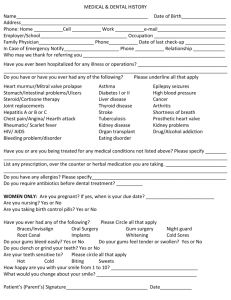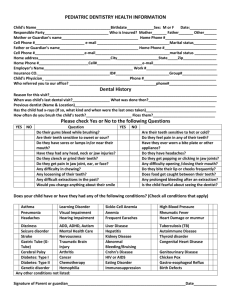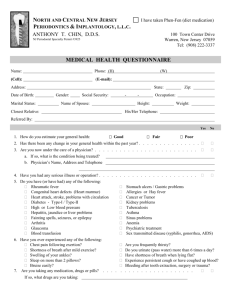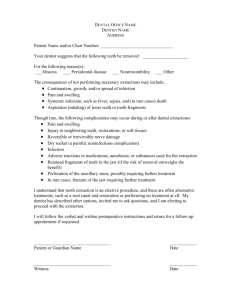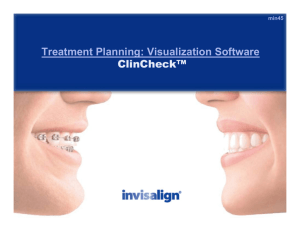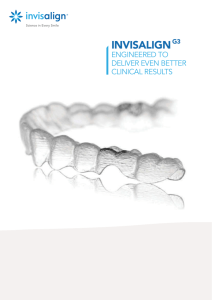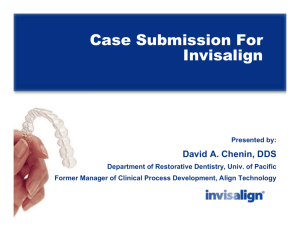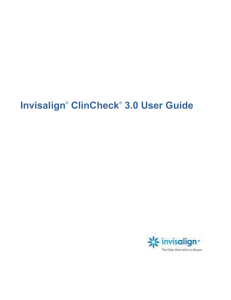Invisalign: Not Just For Straight Teeth
advertisement
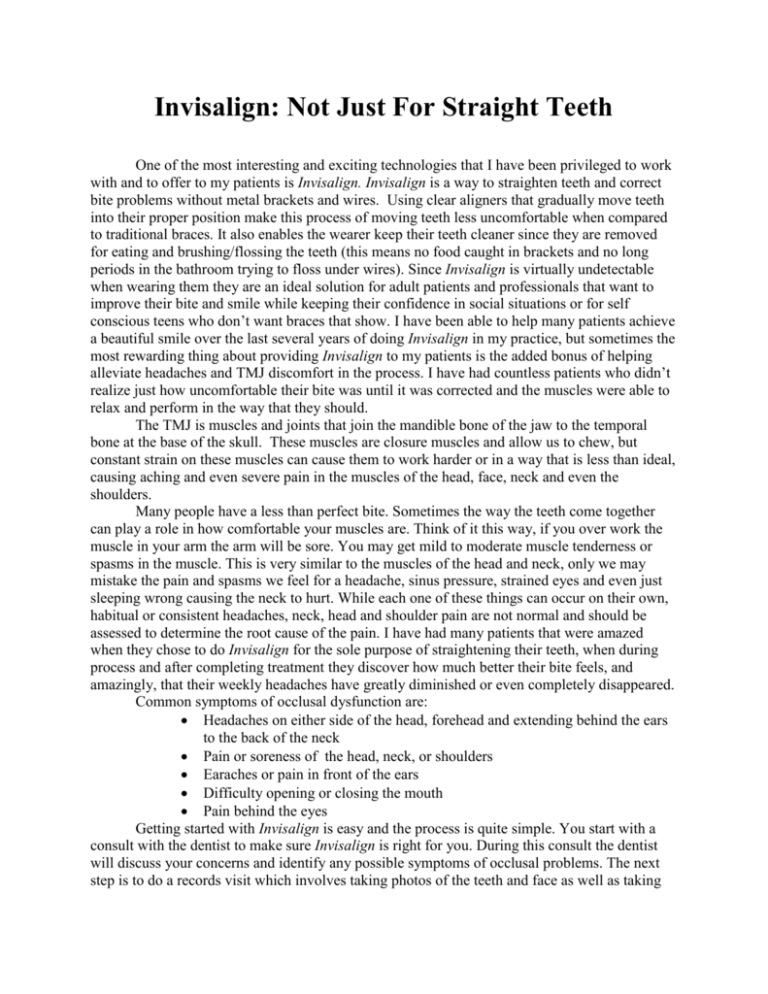
Invisalign: Not Just For Straight Teeth One of the most interesting and exciting technologies that I have been privileged to work with and to offer to my patients is Invisalign. Invisalign is a way to straighten teeth and correct bite problems without metal brackets and wires. Using clear aligners that gradually move teeth into their proper position make this process of moving teeth less uncomfortable when compared to traditional braces. It also enables the wearer keep their teeth cleaner since they are removed for eating and brushing/flossing the teeth (this means no food caught in brackets and no long periods in the bathroom trying to floss under wires). Since Invisalign is virtually undetectable when wearing them they are an ideal solution for adult patients and professionals that want to improve their bite and smile while keeping their confidence in social situations or for self conscious teens who don’t want braces that show. I have been able to help many patients achieve a beautiful smile over the last several years of doing Invisalign in my practice, but sometimes the most rewarding thing about providing Invisalign to my patients is the added bonus of helping alleviate headaches and TMJ discomfort in the process. I have had countless patients who didn’t realize just how uncomfortable their bite was until it was corrected and the muscles were able to relax and perform in the way that they should. The TMJ is muscles and joints that join the mandible bone of the jaw to the temporal bone at the base of the skull. These muscles are closure muscles and allow us to chew, but constant strain on these muscles can cause them to work harder or in a way that is less than ideal, causing aching and even severe pain in the muscles of the head, face, neck and even the shoulders. Many people have a less than perfect bite. Sometimes the way the teeth come together can play a role in how comfortable your muscles are. Think of it this way, if you over work the muscle in your arm the arm will be sore. You may get mild to moderate muscle tenderness or spasms in the muscle. This is very similar to the muscles of the head and neck, only we may mistake the pain and spasms we feel for a headache, sinus pressure, strained eyes and even just sleeping wrong causing the neck to hurt. While each one of these things can occur on their own, habitual or consistent headaches, neck, head and shoulder pain are not normal and should be assessed to determine the root cause of the pain. I have had many patients that were amazed when they chose to do Invisalign for the sole purpose of straightening their teeth, when during process and after completing treatment they discover how much better their bite feels, and amazingly, that their weekly headaches have greatly diminished or even completely disappeared. Common symptoms of occlusal dysfunction are: Headaches on either side of the head, forehead and extending behind the ears to the back of the neck Pain or soreness of the head, neck, or shoulders Earaches or pain in front of the ears Difficulty opening or closing the mouth Pain behind the eyes Getting started with Invisalign is easy and the process is quite simple. You start with a consult with the dentist to make sure Invisalign is right for you. During this consult the dentist will discuss your concerns and identify any possible symptoms of occlusal problems. The next step is to do a records visit which involves taking photos of the teeth and face as well as taking impressions of the teeth. Your dentist will send the impressions to the Invisalign laboratory where they are then scanned with a CT scanner and processed into a computer generated 3-D model of the teeth. The dentist then may use the computer generated model to move the teeth into their ideal positions and then a series of trays are constructed to move the teeth into these positions. The average case takes about a year to complete however, the length will vary for every individual. Once you begin, you will receive a few sets of aligners. Each set of aligners is a little different from the previous one and are changed out every two weeks or so depending on what the dentist recommends. He will monitor the progression every six weeks and make any necessary adjustments during these periodic visits. Then once the desired position is achieved it is necessary to wear a retainer. These retainers are also invisible and after an initial stabilization period may be worn at night only. There are also secondary benefits to straightening teeth such as healthier gums. The more crowded the teeth are, the harder they will be to keep clean thus making your gums more susceptible to gum disease. It can make brushing more effective and flossing easier which will also reduce the risk of decay as well. BEFORE AFTER
